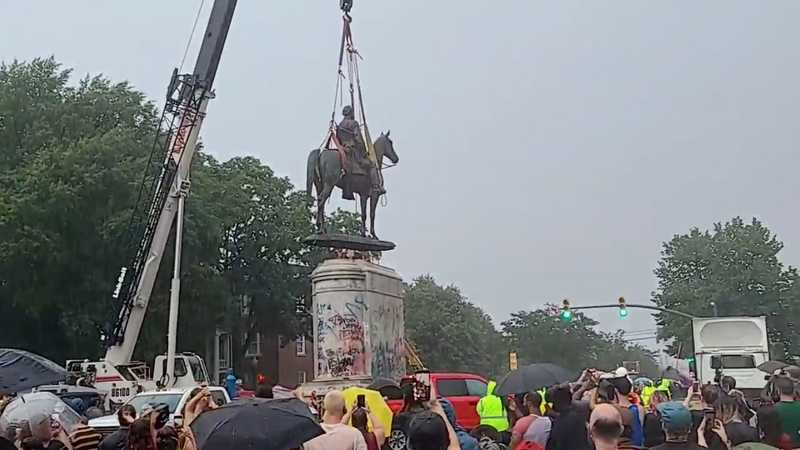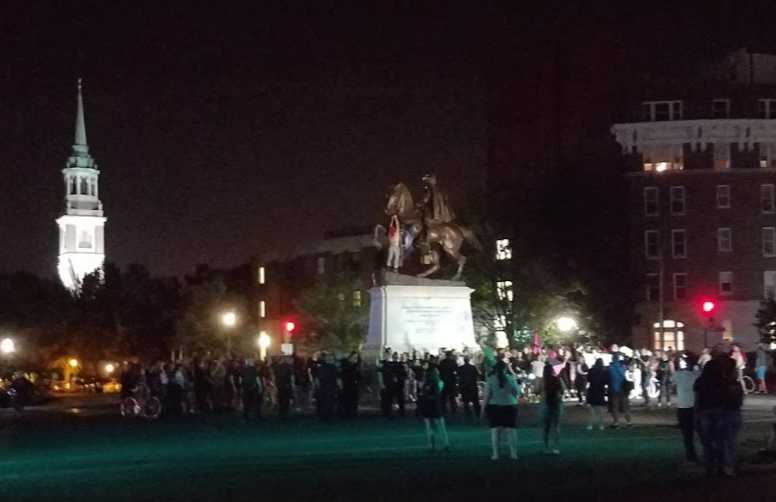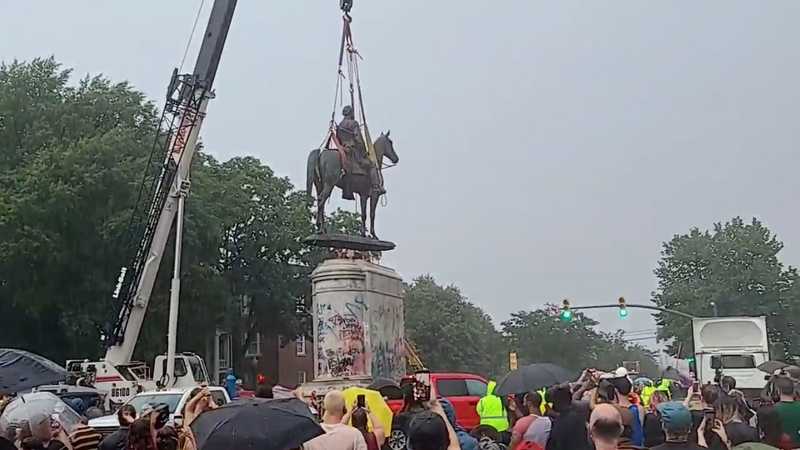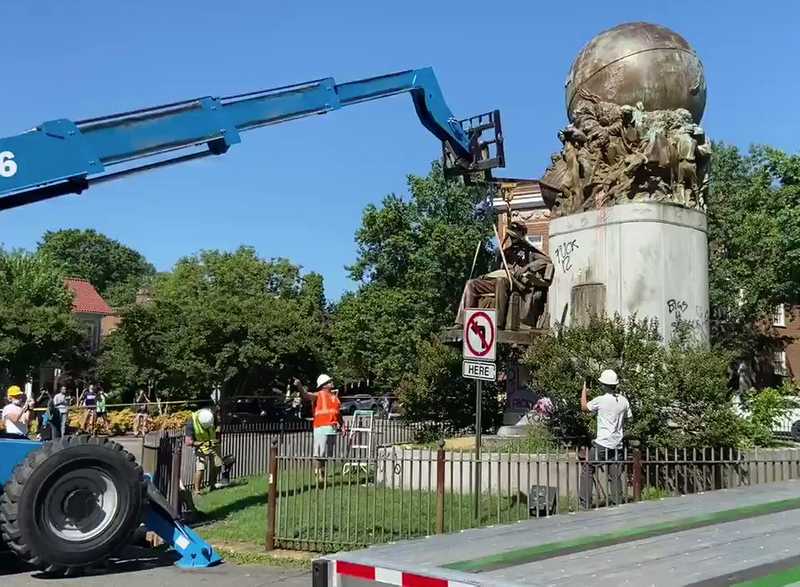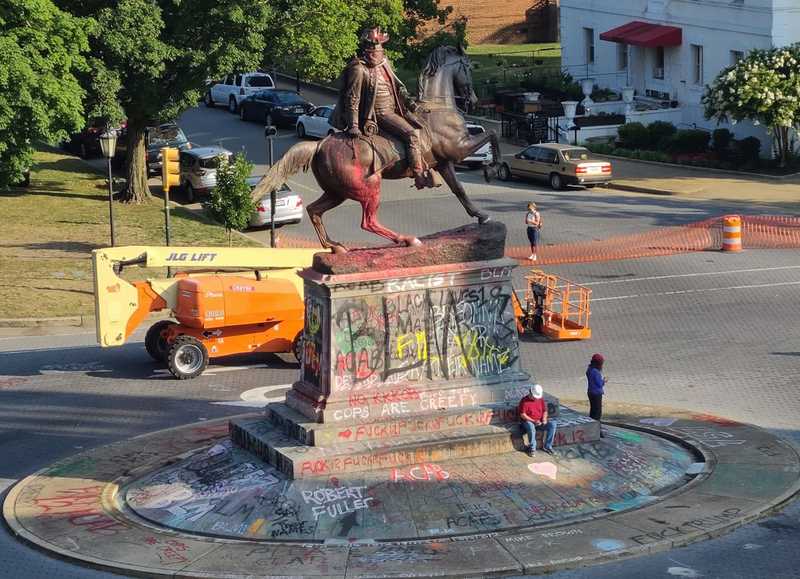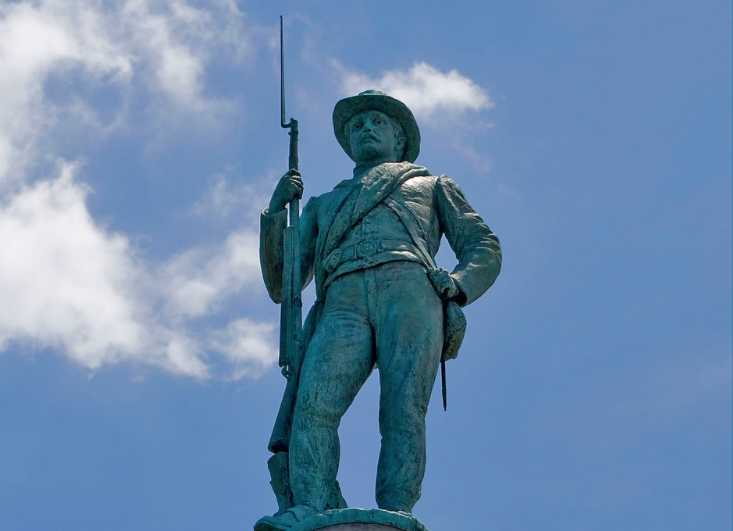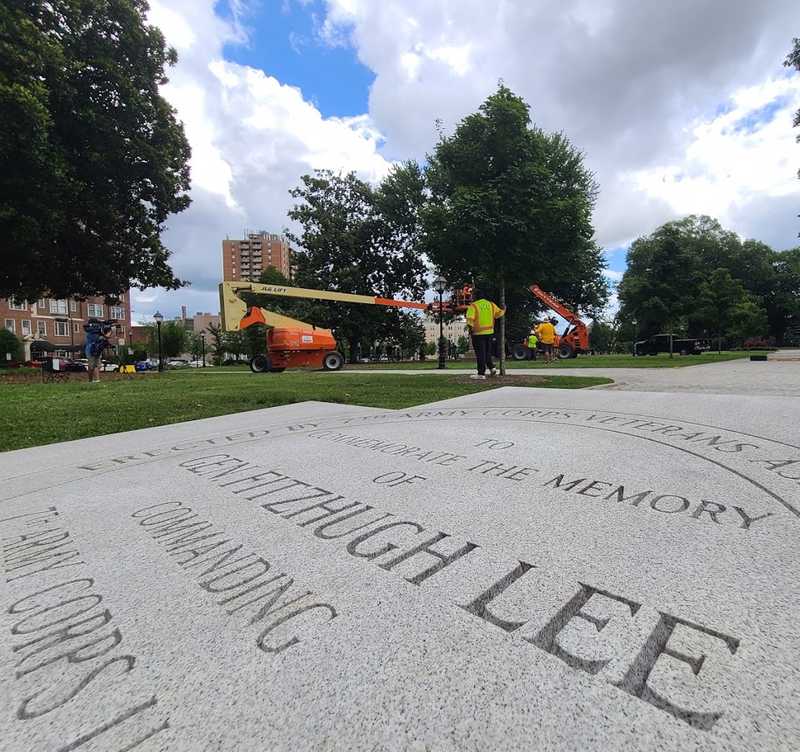The Beginning
The summer of 2020 brought about rapid change in the City of Richmond but the events enabling the removal of the "Lost Cause" monuments and icons began several years ago after the widespread outrage from the horrific Charleston church shooting in 2015. Across the country confederate iconography was purged from the public sphere in response to the killings and the outrage over the killer's fascination with the neo-confederate ideology.
While other states made historic progress at removing confederate flags and statues the first hints of change locally began in June of 2017 when Mayor Levar Stoney formed a commission to study how to handle the controversial confederate statues of the city's famous Monument Avenue. Initially this commission's objectives were to investigate how to add context to the memorials and investigate whether any should or could be removed.
The 10-person commission of historians, experts and community stakeholders were to spend a year holding public forums and developing a plan for the city to move forwards. Unexpectedly another tragic external event would disrupt this process and influence decision makers to consider a stronger course of action.
In nearby Charlottesville, Virginia local leaders had spent the previous year debating whether to remove or contextualize their city's Robert E. Lee statue. In February they voted to remove the statue from the park triggering a legal battle in which opponents argued a state law forbid localities from removing confederate monuments, that same state law would also hinder Richmond's efforts to move forward.
With disputes ongoing in court prominent white nationalist activist Richard Spencer organized a gathering in Charlottesville in May of 2017. This event in the city's Lee Park was attended by several dozen torch wielding demonstrators protesting the potential removal of the park's namesake statue.
In August of 2017 thousands of so-called "alt-right" activists, pro-confederacy and other aligned groups descended on Charlottesville clashing with thousands of counter-protesters in the streets of the city. The protest turned violent with a large number of altercations between armed participants. Ultimately the event would claim three lives, local woman Heather Heyer killed in a vicious vehicle attack by a white supremacist and two Virginia state troopers killed in a tragic helicopter crash.
This event set off a series of spontaneous protests in Richmond with antifa affiliated individuals targeting local confederate statues and classing with capitol police charged with protecting the Robert E. Lee monument. At one point in the Richmond protests a demonstrator took the historic first step of defiance and climbed atop the J.E.B. Stuart statue and planted a flag as law enforcement officers looked on from the perimeter. While the confederate statues of Richmond had been periodically tagged with graffiti in the past the conspicuous act of scaling the confederate statue was without precedent.
Just three days after the Charlottesville mayhem Richmond City Councilmember Mike Jones proposed a resolution to remove confederate statues from Monument Avenue. This resolution and a subsequent effort to revive it in 2018 would fail. In the meantime the city sanctioned commission came back with recommendations on how to handle the confederate statues on Monument Avenue. In a 115 page report the panel recommended that the Jefferson Davis memorial come down and that the city add historical context to the remaining monuments.
The committee's recommendations released in the summer of 2018 would prove unactionable as Virginia state law would preclude moving forward with any removal or even adding context to the monuments. The Republican dominated legislature had no interest in modifying the code and instead preferred preserving the confederate icons as currently presented.
In 2019 national events continued to influence Virginia and political frustrations against the president's party in Washington helped usher in a dominant Democratic majority in the commonwealth. These newly elected delegates and senators shared different beliefs than their Republican predecessors with many openly campaigning against confederate iconography in the public sphere.
In December of 2019 Councilmember Mike Jones once more introduced a resolution requesting the state grant localities the authority to remove confederate statues on public land within their jurisdiction. At the early January city council meeting the council reversed course and sided with Jones voting 6-2 to support the resolution.
The newly sworn in legislature dominated by the Democratic Party convened shortly thereafter and members of both houses brought forward legislation to amend the state law which removed criminal penalties for dismantling confederate memorials and crafted a 60 day legal process to remove and relocate statues. In April Democratic Governor Ralph Northam signed the legislation which would become law on July 1.
With the outbreak of the coronavirus discussions about the fate of the statues moved to the backburner through the early part of the spring. The city would soon have the authority to move forward and it was assumed that the city would adopt some or all of the recommendations from the committee.
The Death of George Floyd
Once more national events would drive the direction of history in Richmond after the outrageous death of Minneapolis resident George Floyd on Memorial Day and the subsequent demonstrations. By the end of the week after the Floyd killing demonstrations had spread to Richmond with the second night of protests bringing demonstrators to Monument Avenue.
Late in the evening of Saturday May 30th hundreds of demonstrators marched west through the VCU campus and onto Monument Avenue arriving at the first statue J.E.B. Stuart. Here demonstrators paused and ripped down the metal railings which guarded the once sacrosanct statue. In this moment of defiance, protest and outrage demonstrators covered the statue pedestal with graffiti.
Moving west the crowd arrived at the Robert E. Lee statue where they once more shook their cans of spray paint and tagged the towering stone pedestal of the confederate monument.
Certainly not done for the night the crowds moved along to the next confederate memorial and tagged the Jefferson Davis statue with graffiti. A rope was wrapped around the figure's neck and there was an unsuccessful attempt to topple it.
Reaching Arthur Ashe Boulevard demonstrators added a limited amount of graffiti to the Stonewall Jackson statue and virtually ignore Matthew Fontaine Maury as bigger more pressing targets at the United Daughters of the Confederacy would draw their interests for the moment. Eventually during the weeks of unrest to come all of the statue pedestals would be covered with graffiti.
The Volunteer Removal Attempts
With protests becoming daily affairs it was inevitable that attempts would be made to topple the city's controversial statues. There were a few symbolic and failed attempts at taking down the statues of Richmond starting with the aforementioned Davis monument on the second night of demonstrations. On the 4th night of protests in Richmond several individuals climbed the Stuart statue with hacksaws and attempted to cut the legs off the statue's equestrian component while other accomplices wrapped rope around it. This attempt would prove to be a failure as the lack of tools and law enforcement intervention prevented further destruction of the statue.
The first to fall would be General Williams Carter Wickham which engaged in congress with the ground on the evening of June 6th.
Encouraged by the successful Wickham toppling and inspired by United Kingdom demonstrators toppling a slavetrader statue and tossing it into a nearby wharf local Richmond demonstrators introduced a statue of Christopher Columbus into Byrd Park's Fountain Lake on June 9th.
On June 10th the exciting trend of toppling statues took a terrifying turn in nearby Portsmouth, Va where a collapsing statue crushed a protester and sending him to the hospital with life threatening injuries. That same night a vigilante in a small sedan ripped down the Jefferson Davis figure from the confederate memorial on Monument Avenue.
A few days later on the evening of June 16th statue vandals took down the Confederate Howitzer monument on the Virginia Commonwealth University Monroe Park campus. Just three days later on June 19th and just a handful of blocks west another group of vandals took down the First Virginia Regiment statue in Meadow Park.
The demonstrators began circulating bingo cards with all the statues they had toppled but now all the easy prizes had been taken down with only the J.E.B. Stuart statue being the last achievable target. On the evening of June 21st using a crowd of demonstrators as cover vandals attempted to topple the giant statue at Stuart Circle using several ropes and teams pulling the monument from several angles. Once more Richmond Police intervened and alarmed city leaders were motivated to act seeing as how this sort of vigilante activity was bound to get someone hurt or killed.
The City Takes Steps to Remove
With the new law taking effect on July 1 and the elimination of penalties for removing a statue Mayor Levar Stoney felt compelled to act immediately. Under the city code the mayor is designated as Director of Emergency Operations and at the onset of civil unrest in the city the council had declared a State of Emergency. Using his emergency authority the mayor moved to act on July 1 opting to skip the 60 day prescribed process and instead hiring a construction company to remove the city's monuments to the "Lost Cause" and relocate them into temporary storage.
Thomas "Stonewall" Jackson
July 1, 2020
With a new state law taking effect Mayor Levar Stoney exercised his emergency authority to remove the city's confederate statues. After a tense city council meeting on the matter Stoney defied the council & city attorney's recommendation at proceeded with the first monument removal.
Maury Fontaine Maury
July 2, 2020
Crews arrived in the morning hours and dismantled the statue of Matthew Fontaine Maury at the intersection of Monument & Belmont. After having made quick work of the Maury statue the crews moved on and removed several cannon statues marking confederate fortification boundaries along Monument Avenue.
J.E.B. Stuart
July 7, 2020
The giant equestrian statue of J.E.B. Stuart enjoyed a brief reprieve from removal over the long Independence Day weekend until crews arrived after sunrise to commence their work. Crane crews spent much of the sweltering hot morning grinding away at hundred year old bolts before lifting the statue to a truck for removal from Monument Avenue.
Confederate Soldiers & Sailors
July 8, 2020 | Morning
Contracted crane crews made their way to Richmond's Church Hill neighborhood and removed the statue celebrating the Confederacy's Soldiers & Sailors. A minor incident occurred as city workers were setting up barriers and an angry man interfered and ripped down construction fencing.
Jefferson Davis
July 8, 2020 | Afternoon
While the statue of Jefferson Davis was already dispatched from the monument many confederate items remained including the giant Vindicatrix which stood atop the memorial's central pillar. Crews spent the afternoon dismantling and removing all confederate decor and ornamentation from the grounds.
Maury Statue Globe & Monroe Park Confederate Statues Removedte Statues
July 9, 2020
It was a busy day for crane operators as they returned to the Maury monument to remove the giant globe from its pedestal at the intersection of Monument & Belmont. Additionally crews dismantled and removed two monuments to the Lost Cause erected inside Monroe Park.
